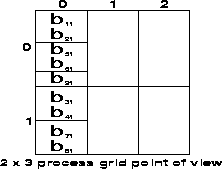

This discovery, although controversial at first, led to a series of investigations that culminated in the 1978 publication of a book by O'Keefe and his colleague Lynn Nadel called The Hippocampus as a Cognitive Map (a phrase that also appeared in the title of the 1971 paper) -the book argued that the hippocampal neural network instantiates cognitive maps as hypothesized by the psychologist Edward C. In 1971, John O'Keefe and Jonathon Dostrovsky reported the discovery of place cells in the rat hippocampus-cells that fire action potentials when an animal passes through a specific small region of space, which is called the place field of the cell.

Grid cells derive their name from the fact that connecting the centers of their firing fields gives a triangular grid. The discovery also suggested a mechanism for dynamic computation of self-position based on continuously updated information about position and direction. The arrangement of spatial firing fields, all at equal distances from their neighbors, led to a hypothesis that these cells encode a neural representation of Euclidean space. They were awarded the 2014 Nobel Prize in Physiology or Medicine together with John O'Keefe for their discoveries of cells that constitute a positioning system in the brain. Grid cells were discovered in 2005 by Edvard Moser, May-Britt Moser, and their students Torkel Hafting, Marianne Fyhn, and Sturla Molden at the Centre for the Biology of Memory (CBM) in Norway.

Grid cells have been found in many animals, including rats, mice, bats, monkeys, and humans. Red dots indicate locations at which a particular entorhinal grid cell fired.Ī grid cell is a type of neuron within the entorhinal cortex that fires at regular intervals as an animal navigates an open area, allowing it to understand its position in space by storing and integrating information about location, distance, and direction. Trajectory of a rat through a square environment is shown in black.


 0 kommentar(er)
0 kommentar(er)
